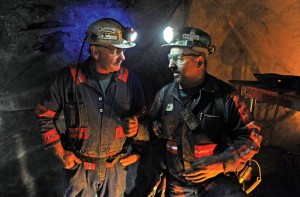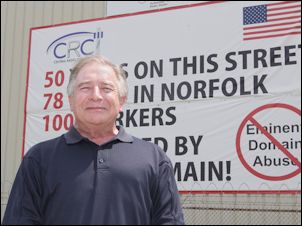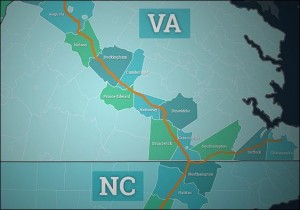By Peter Galuszka
Four years ago, coal titan Alpha Natural Resources, one of Virginia’s biggest political donors, was riding high.
It was spending $7.1 billion to buy Massey Energy, a renegade coal firm based in Richmond that had compiled an extraordinary record for safety and environmental violations and fines. Its management practices culminated in a huge mine blast on April 5, 2010 that killed 29 miners in West Virginia, according to three investigations.
Bristol-based Alpha, founded in 2002, had coveted Massey’s rich troves of metallurgical and steam coal as the industry was undergoing a boom phase. It would get about 1,400 Massey workers to add to its workforce of 6,600 but would have to retrain them in safety procedures through Alpha’s “Running Right” program.
Now, four years later, Alpha is in a fight for its life. Its stock – trading at a paltry 55 cents per share — has been delisted by the New York Stock Exchange. After months of layoffs, the firm is preparing for a bankruptcy filing. It is negotiating with its loan holders and senior bondholders to help restructure its debt.
Alpha is the victim of a severe downturn in the coal industry as cheap natural gas from hydraulic fracturing drilling has flooded the market and become a favorite of electric utilities. Alpha had banked on Masset’s huge reserves of met coal to sustain it, but global economic strife, especially in China, has dramatically cut demand for steel. Some claim there is a “War on Coal” in the form of tough new regulations, although others claim the real reason is that coal can’t face competition from other fuel sources.
Alpha’s big fall has big implications for Virginia in several arenas:
(1) Alpha is one of the largest political donors in the state, favoring Republicans. In recent years, it has spent $2,256,617 on GOP politicians and PACS, notably on such influential politicians and Jerry Kilgore and Tommy Norment, according to the Virginia Public Access Project. It also has spent $626,558 on Democrats.
In 2014-2015, it was the ninth largest donor in the state. Dominion was ahead among corporations, but Alpha beat out such top drawer bankrollers as Altria, Comcast and Verizon. The question now is whether a bankruptcy trustee will allow Alpha to continue its funding efforts.
(2) How will Alpha handle its pension and other benefits for its workers? If it goes bankrupt, it will be in the same company as Patriot Coal which is in bankruptcy for the second time in the past several years. Patriot was spun off by Peabody, the nation’s largest coal producer, which wanted to get out of the troubled Central Appalachian market to concentrate on more profitable coalfields in Wyoming’s Powder River Basin and the Midwest.
Critics say that Patriot was a shell firm set up by Peabody so it could skip out of paying health, pension and other benefits to the retired workers it used to employ. The United Mine Workers of America has criticized a Patriot plan to pay its top five executives $6.4 million as it reorganizes its finances.
(3) Coal firms that have large surface mines, as Alpha does, may not be able to meet the financial requirements to clean up the pits as required by law. Alpha has used mountaintop removal practices in the Appalachians in which hundreds of feet of mountains are ripped apart by explosives and huge drag lines to get at coal. They also have mines in Wyoming that also involve removing millions of tons of overburden.
Like many coal firms, Alpha has used “self-bonding” practices to guarantee mine reclamation. In this, the companies use their finances as insurance that they will clean up. If not, they must post cash. Wyoming has given Alpha until Aug. 24 to prove it has $411 million for reclamation.
(4) The health problems of coalfield residents continue unabated. According to a Newsweek report, Kentucky has more cancer rates than any other state. Tobacco smoking as a lot to do with it, but so does exposure to carcinogenic compounds that are released into the environment by mountaintop removal. This also affects people living in Virginia and West Virginia. In 2014, Alpha was fined $27.5 million by federal regulators for illegal discharges of toxic materials into hundreds of streams. It also must pay $200 million to clean up the streams.
The trials of coal companies mean bad news for Virginia and its sister states whose residents living near shut-down mines will still be at risk from them. As more go bust or bankrupt, the bill for their destructive practices will have to borne by someone else.
After digging out the Appalachians for about 150 years, the coal firms have never left coalfield residents well off. Despite its coal riches, Kentucky ranks 45th in the country for wealth. King Coal could have helped alleviate that earlier, but is in a much more difficult position to do much now. Everyday folks with be the ones paying for their legacy.















